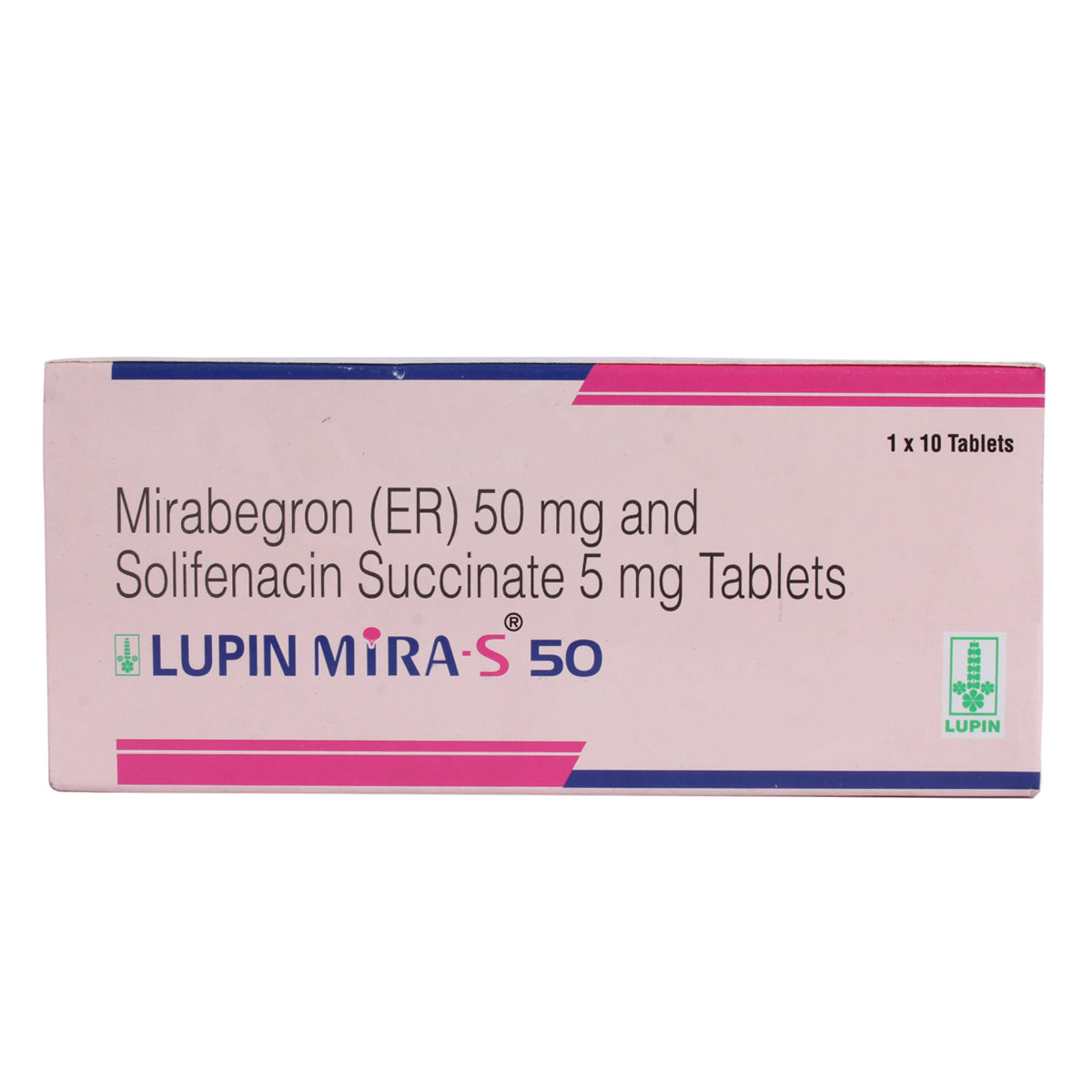Mirbeg-S 50 Tablet 10's
MRP ₹568
(Inclusive of all Taxes)
₹85.2 Cashback (15%)
Provide Delivery Location
Online payment accepted
 Prescription drug
Prescription drugWhats That
Composition :
Manufacturer/Marketer :
Consume Type :
Expires on or after :
Return Policy :
About Mirbeg-S 50 Tablet
Mirbeg-S 50 Tablet is a combination medicine used to treat overactive bladder (OAB) with symptoms of urinary incontinence (urine leakage), urgent or frequent urination, increased night-time urination, and dysuria (painful or difficult urination). Overactive bladder is a condition in which there is a problem with bladder function, which causes a sudden urge to urinate that might be difficult to control.
Mirbeg-S 50 Tablet contains Solifenacin (anti-cholinergic) and Mirabegron (beta-3 adrenergic agonist). Solifenacin reduces the undesirable contractions of the bladder, thereby increasing the amount of urine that the bladder can hold. This decreases the urgency for urination. Mirabegron relaxes the muscles of the bladder; this prevents frequent, uncontrolled, or urgent urination. Together, Mirbeg-S 50 Tablet helps in treating overactive bladder.
You are advised to take Mirbeg-S 50 Tablet for as long as your doctor has prescribed it for you, depending on your medical condition. In some cases, you may experience common side-effects such as dry mouth, constipation, headache, high blood pressure, and vomiting. Most of these side effects do not require medical attention and will resolve gradually over time. However, you are advised to talk to your doctor if you experience these side effects persistently.
Consult your doctor if you are pregnant or breastfeeding. Mirbeg-S 50 Tablet is not recommended for children as safety and efficacy have not been established. Mirbeg-S 50 Tablet may cause blurred vision, so drive with caution. Avoid or limit alcohol consumption along with Mirbeg-S 50 Tablet as it could lead to increased dizziness. Inform your doctor about your health condition and medications before taking Mirbeg-S 50 Tablet to rule out any side effects/interactions.
Uses of Mirbeg-S 50 Tablet
Directions for Use
Key Benefits
Mirbeg-S 50 Tablet is a combination of two drugs, namely: Solifenacin and Mirabegron. Mirbeg-S 50 Tablet is a combination medicine used to treat overactive bladder (OAB) with symptoms of urinary incontinence (urine leakage), urgent or frequent urination, increased night-time urination, dysuria (painful or difficult urination). Solifenacin is an anti-cholinergic that reduces the undesirable contractions of the bladder, thereby increasing the amount of urine that the bladder can hold. This decreases the urgency for urination. Mirabegron is a beta-3 adrenergic agonist which relaxes the muscles of the bladder; this prevents frequent, uncontrolled, or urgent urination. Together, Mirbeg-S 50 Tablet helps in treating an overactive bladder.
Storage
Drug Warnings
Do not take Mirbeg-S 50 Tablet if you are allergic to any of its contents. Inform your doctor if you have glaucoma, myasthenia gravis, ulcerative colitis, urinary retention, high blood pressure, angioedema, kidney or liver problems. Consult your doctor if you are pregnant or breastfeeding. Mirbeg-S 50 Tablet is not recommended for children. Mirbeg-S 50 Tablet may cause blurred vision, so drive with caution. Avoid or limit alcohol consumption with Mirbeg-S 50 Tablet as it could lead to increased dizziness.
Diet & Lifestyle Advise
- Pelvic floor exercises would be helpful in treating bladder spasms.
- Avoid foods like sugars, carbonated beverages, tea, citrus fruits, tomatoes, spicy foods, chocolate and tea.
- Avoid drinking excess alcohol or caffeinated drinks, as they can worsen the symptoms.
- Maintain a healthy weight, and exercise regularly.
- Quit smoking.
- Take 6-8glasses of liquids every day.
- Avoid processed foods. Instead, choose whole, unprocessed foods.
- Include fruits, vegetables, and fibre-rich food in your diet.
Side Effects of Mirbeg-S 50 Tablet
- Constipation
- Headache
- Dry mouth
- Blurred vision
- Vomiting
- High blood pressure
- Urinary tract infection
Habit Forming
Therapeutic Class
All Substitutes & Brand Comparisons
RX
Mirbeg-S 50 Combikit 1's
Ipca Laboratories Ltd
₹56.5
(₹3.64 per unit)
92% CHEAPERRX
Urihold S 50 Tablet 10's
Aristo Pharmaceuticals Pvt Ltd
₹234
(₹23.4 per unit)
54% CHEAPERRX
Out of StockSoliact M 50 Tablet 10's
Cipla Ltd
₹400
(₹36.0 per unit)
29% CHEAPER
Author Details
We provide you with authentic, trustworthy and relevant information
FAQs
Drug-Drug Interactions Checker List
- DIPHENHYDRAMINE
- METOPROLOL
- ACETAMINOPHEN
- ALBUTEROL
Disease/Condition Glossary
Overactive bladder (OAB): Overactive bladder is a condition in which there is a problem with bladder function, which causes a sudden urge to urinate that might be difficult to control. The contraction or tightening of bladder muscles causes bladder spasms. Continuous contractions may cause an urge to urinate. Overactive bladder is characterised by involuntary leakage of urine, excessive urination, and urgent need to urinate. The common causes of bladder spasms are urinary tract infections, drinking too much caffeine or alcohol, diabetes, constipation, impaired kidney function, bladder stones, enlarged prostate, or neurological disorders. Symptoms of overactive bladder include urinating more than 8 times a day and more than 2 times at night, strong and sudden need to urinate, leakage of urine, and loss of bladder control.

Have a query?
Alcohol
Safe if prescribed
You are recommended to avoid or limit alcohol consumption while taking Mirbeg-S 50 Tablet as it may cause increased dizziness.
Pregnancy
Consult your doctor
Limited information is available regarding the usage of Mirbeg-S 50 Tablet during pregnancy. Consult your doctor before taking Mirbeg-S 50 Tablet if you are pregnant.
Breast Feeding
Consult your doctor
Limited information is available regarding the usage of Mirbeg-S 50 Tablet during breastfeeding. Consult your doctor before taking Mirbeg-S 50 Tablet if you are breastfeeding.
Driving
Safe if prescribed
Mirbeg-S 50 Tablet may cause blurred vision and tiredness. Drive or operate machinery only if you are alert.
Liver
Consult your doctor
Please consult your doctor if you have a liver impairment or any concerns regarding this.
Kidney
Consult your doctor
Please consult your doctor if you have kidney impairment or any concerns regarding this.
Children
Safe if prescribed
Mirbeg-S 50 Tablet is not recommended for children as safety and effectiveness have not been established.






















_0.jpg?tr=q-85)

